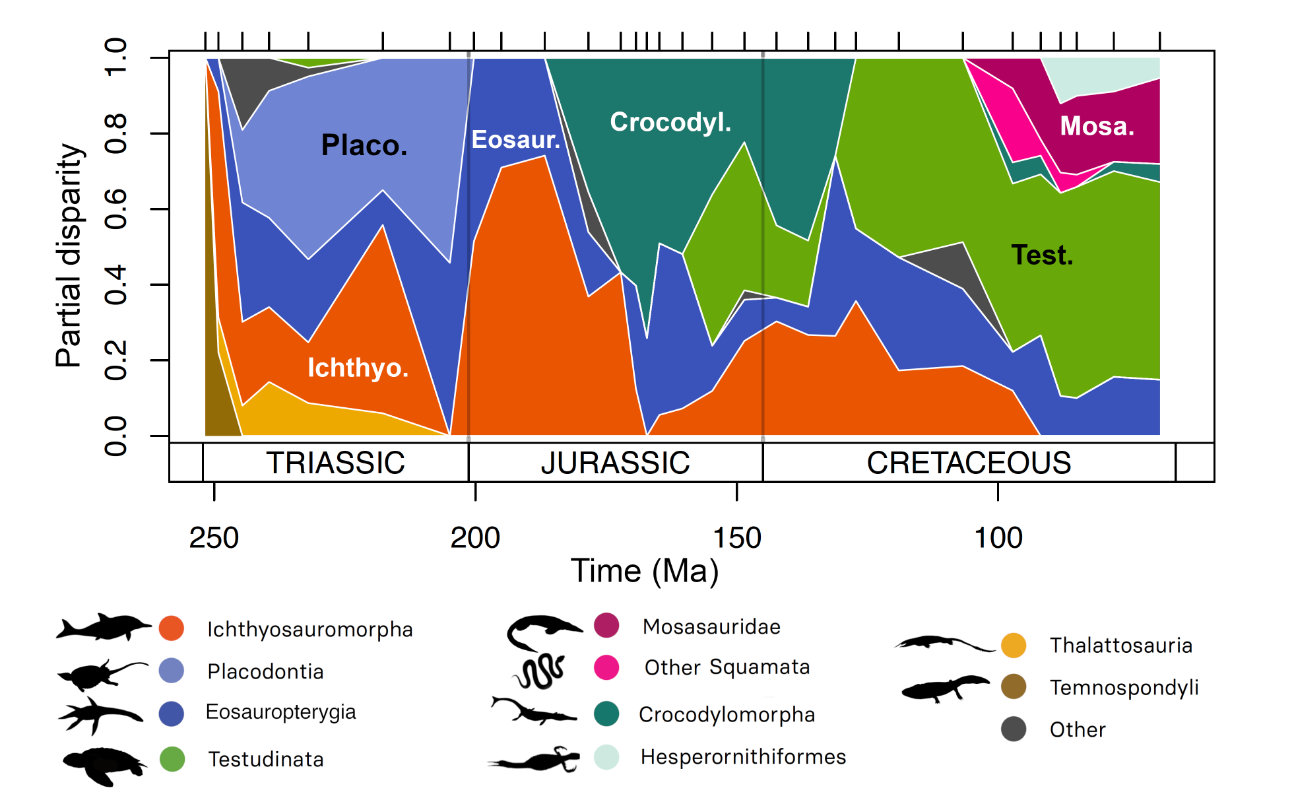Evolution of ecospace occupancy by Mesozoic marine tetrapods
Reeves, J.C., Moon, B.C., Benton, M.J. & Stubbs, T.L. 2020 Evolution of ecospace occupancy by Mesozoic marine tetrapods. Palaeontology doi:10.1111/pala.12508
This paper is the result of a MSc project by Jane at the University of Bristol. It resulted from an earlier study using quantitative ecospace modelling (Bush and Novack-Gottshall 2012) in ichthyosaurs (Dick and Maxwell 2015) that we took inspiration from and extended to all Mesozoic marine tetrapods. The idea behind this method is simple: use a series of discrete characters to categorise marine tetrapod ecology – such as body size, feeding, swimming, habitat, and others – and then use methods from disparity analyses – non-metric multidimensional scaling and measures of variation – to explore how ecology and ecological diversity changes through time.

While our results corroborate other analyses showing high disparity in the Triassic as these critters first invaded the oceans (Benton et al. 2013; Stubbs and Benton 2016; Moon and Stubbs 2020l because we think about these things a lot in Bristol) there is still a notable increase in disparity through the Jurassic and Cretaceous, such that the end of the Cretaceous may well represent the zenith of disparity in tetrapod ecology. This is perhaps most spurred on by the evolution of turtles, mosasaurs, and aquatic birds. The usual drop in disparity from the end-Triassic–beginning-Jurassic is particularly driven by the decreasing disparity in ichthyosauromorphs and placodonts that make up much of the ecological diversity at the time. Turtles and placodonts are notable for expanding the ecospace greatly, separated particularly by their armour and feeding style.

I hope that this is just a starting point for more inclusive analyses incorporating tetrapods from across the Mesozoic. There’s all that interesting time to try to find what’s driving the changes between these groups, and particularly that brief time of flux at the beginning of the Triassic. Which groups were winners there and what made them able to outlast the others? and what’s happening the middle of the Cretaceous? is the same thing going on here with the origination of mosasaurs, aquatic birds, and others? We’ll have to wait and see what comes next.
